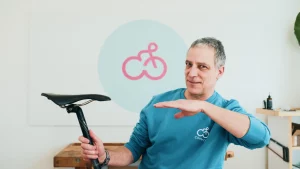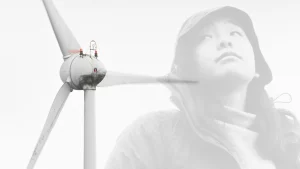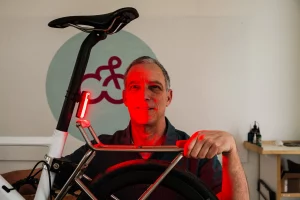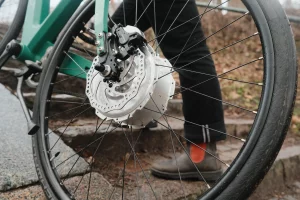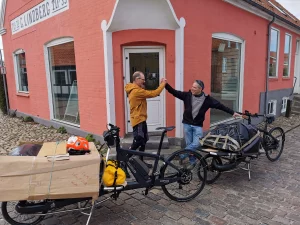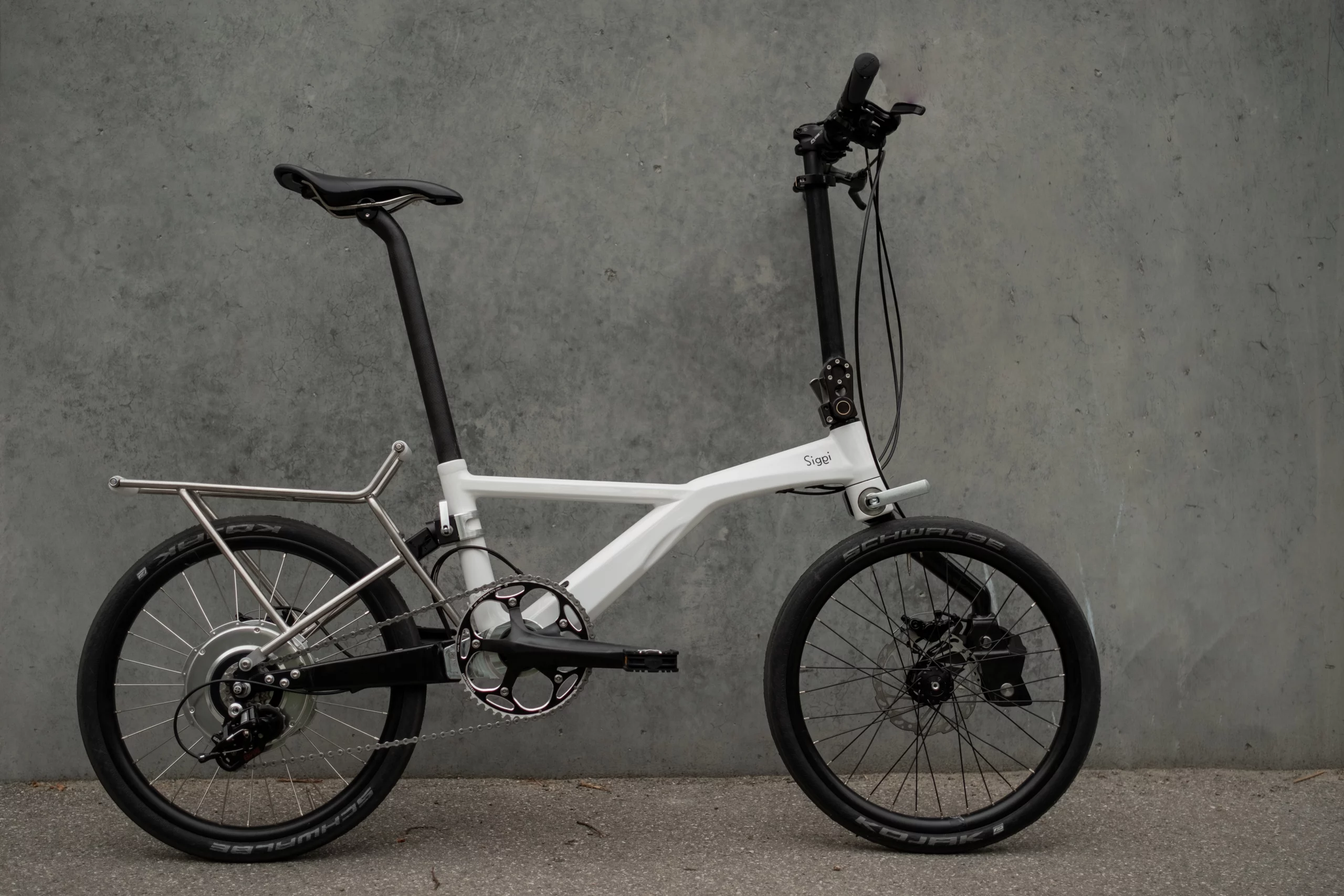Reflecting on the sun and the planets
18.12.2023
Internal gear systems have been around for a long long time and since their beginnings in the mid-1890s, the largest majority have been based on a planetary gear system. Here at Coh&Co we rely on Shimano’s high-end, Alfine internal hub gears and offer both the 8 spd and the 11 spd version. We believe the Alfine offers a fantastic level of value and performance so that is where we have focused our Internal gear hub efforts.
Although internal gear hubs are rarely seen on sport bikes they do have some great advantages that can make them worth their added weight and cost in an urban environment. I’d like to take a quick look at some of the considerations we have when choosing between an internal gear system and external gears and some of the options and combinations to be considered. There are a myriad of different options and combinations that can be made to work and although we are commercially limited to focusing on just a few of these, that has not stopped our eyes from wandering and our minds from wondering. If riding in an environment where your bike is regularly subjected to sand, dirt, grime, mud, water and or rain then internal gear hubs will most likely provide superior performance without the constant maintenance hassle of servicing and cleaning your derailleur and cassette. Combined with a belt drive system, like the Gates Carbon Drive and you’ve got a quiet, long-lived, drivetrain that can be maintenance-free for thousands of kilometers at a time.
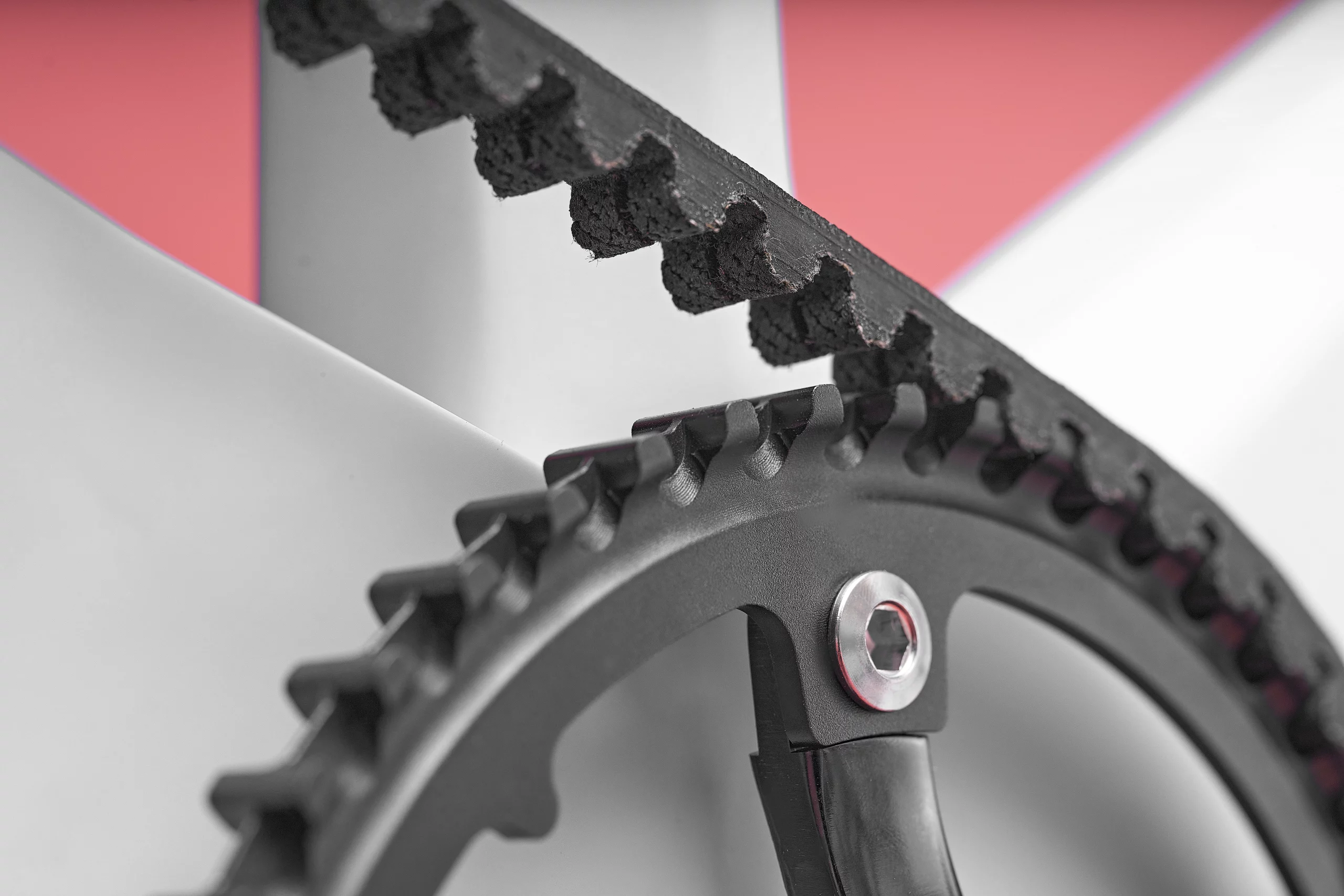
Variations in gearing and gear ratios can address a variety of needs and what is appropriate for one rider or situation doesn’t necessarily meet the needs of a different rider or situation. First off is the power band; how many gears do you need? Someone riding in a flat area will not need as broad a range of gears as someone in a hilly or mountainous area. Cyclists riding with short bursts of city riding might prefer fewer gears with larger increments between gears; whereas someone riding long stretches of road might prefer smaller steps between more gears to allow for small changes in wind and terrain. Our Shimano Alfine 8 speed offers a power band of just over 300%, whereas an Alfine 11 is a bit over 400%. Compare this to the infamous Rolhoff internal hub gears, which can offer a rider 526% on 14 gears, which is equivalent to the power band on a Mountain Bike (at about 7 times the cost)! Nonetheless, the Shimano Alfine will give most riders all the power and speed they need and do so with incredible reliability and serviceability. Unless you’re slugging up some steep mountains with a huge amount of kit the Alfine options will most likely cover your needs.
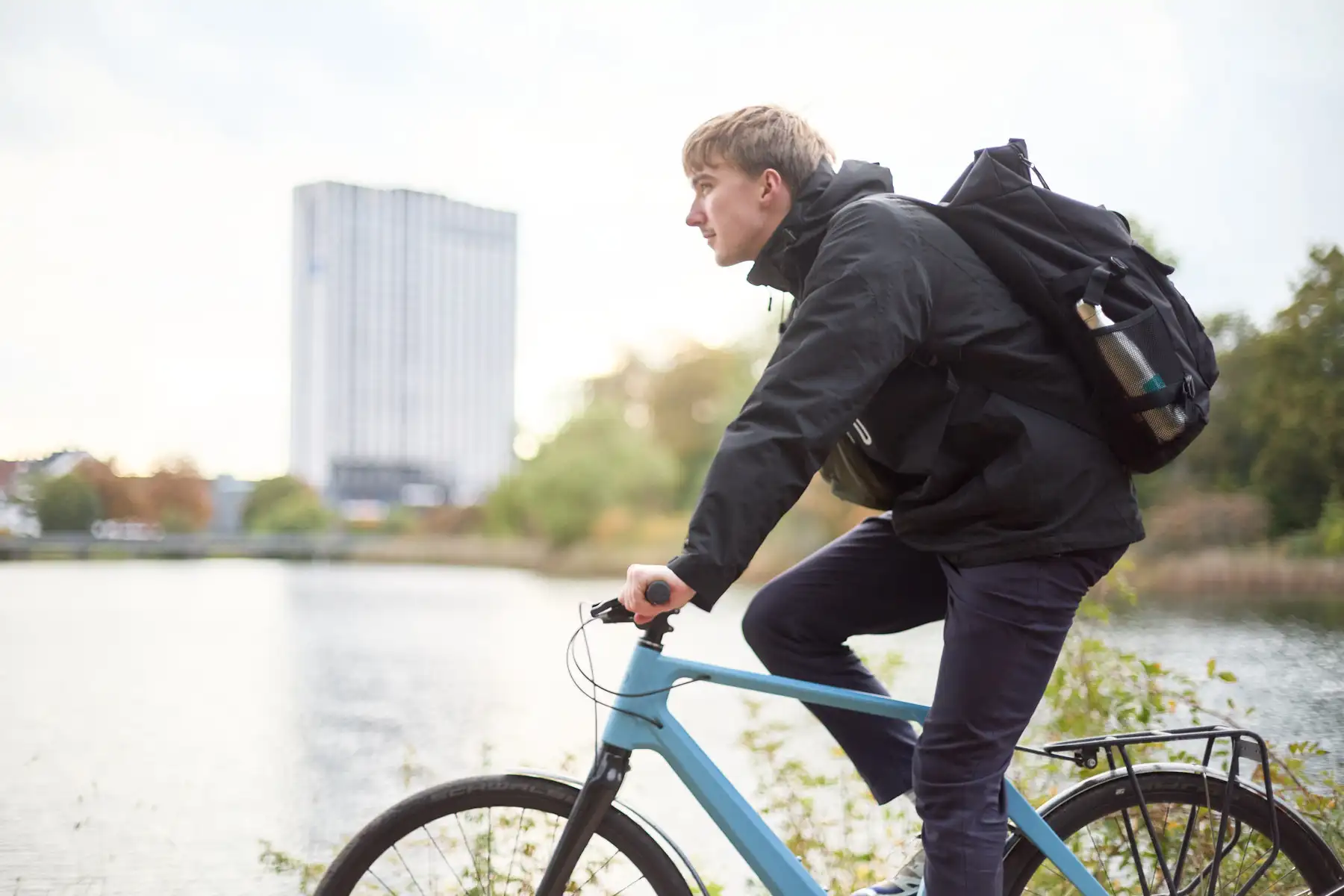
Weight
One of the first things you notice when you lift a bike and compare it to the same bike with an external derailleur system is the weight difference. There is no getting around that the extra one and a half or two kilos added by an internal gear hub can be felt when you compare two bikes with these different configurations…. But, let’s face it, we are not supposed to carry our bikes, they are supposed to carry us! Now, there is no doubt that all else being equal, for every kilo we add we need to use more energy to pedal around town but the truth of the matter is that all things are NOT equal. Where the perfectly tuned external derailleur system may be lighter and even more efficient than our internal hub system our internal hub gear will often outperform a lighter external derailleur system if we factor in the urban reality of dirt grime and then factor in an understandable amount of neglect as can be expected on a commuter bicycle. If we now add in the advantages of a belt drive which will allow us to forget about oiling the chain we have some pretty great arguments for pedaling around with an extra couple of kilos. Internal hub gear systems and belt drive make a fantastic urban drive train!
Efficiency
I have often been asked how much power loss and friction there is in an internal gear hub system. Efficiency is something worth considering, how much of the energy we put into the pedals is transferred to the rubber on the road is something we all are interested in, Afterall a seemingly effortless ride is much more enjoyable than one where you feel like you need to overcome the inefficiency of the bike itself. While different drivetrains and hubs will have different efficiencies at different points in their gear range it may be useful to look at the overall average of the power transfer efficiency for each system.
As a whole, and everything else being equal a single-speed drivetrain without a fixed gear ratio would be most efficient. Looking at the Online data available it becomes evident that a bit of mechanical loss in the system means that a single-speed system ends up transmitting around 97% or 98% of your pedal power through the drive train. Therefore we should think of the ideal as around 97% and not 100%. If we look at a well-maintained and well-tuned external derailleur system, weighing practically nothing, it can transfer up to 96% of your pedal power through the system. Some of the high-end systems can deliver up to 95% efficiency. An Alfine 11 returns around a 91% efficiency and an Alfine 8 returns approximately a 90% efficiency. To put this in perspective some of the other systems available can dip down to under 80%.
So what does this translate to in everyday life?
That means that if you ride a bicycle with an internal gear hub like a Shimano Alfine 11 for around 20 kilometers it’s going to feel like you’ve ridden as much as an extra kilometer compared to a top-tuned external derailleur system. In reality, that is probably a pretty conservative number because if you factor in a bit of chain wear and the reality of a bit of road grime you are probably closer to 2 or 3% which means the difference is as little as a minute or 2/hr.
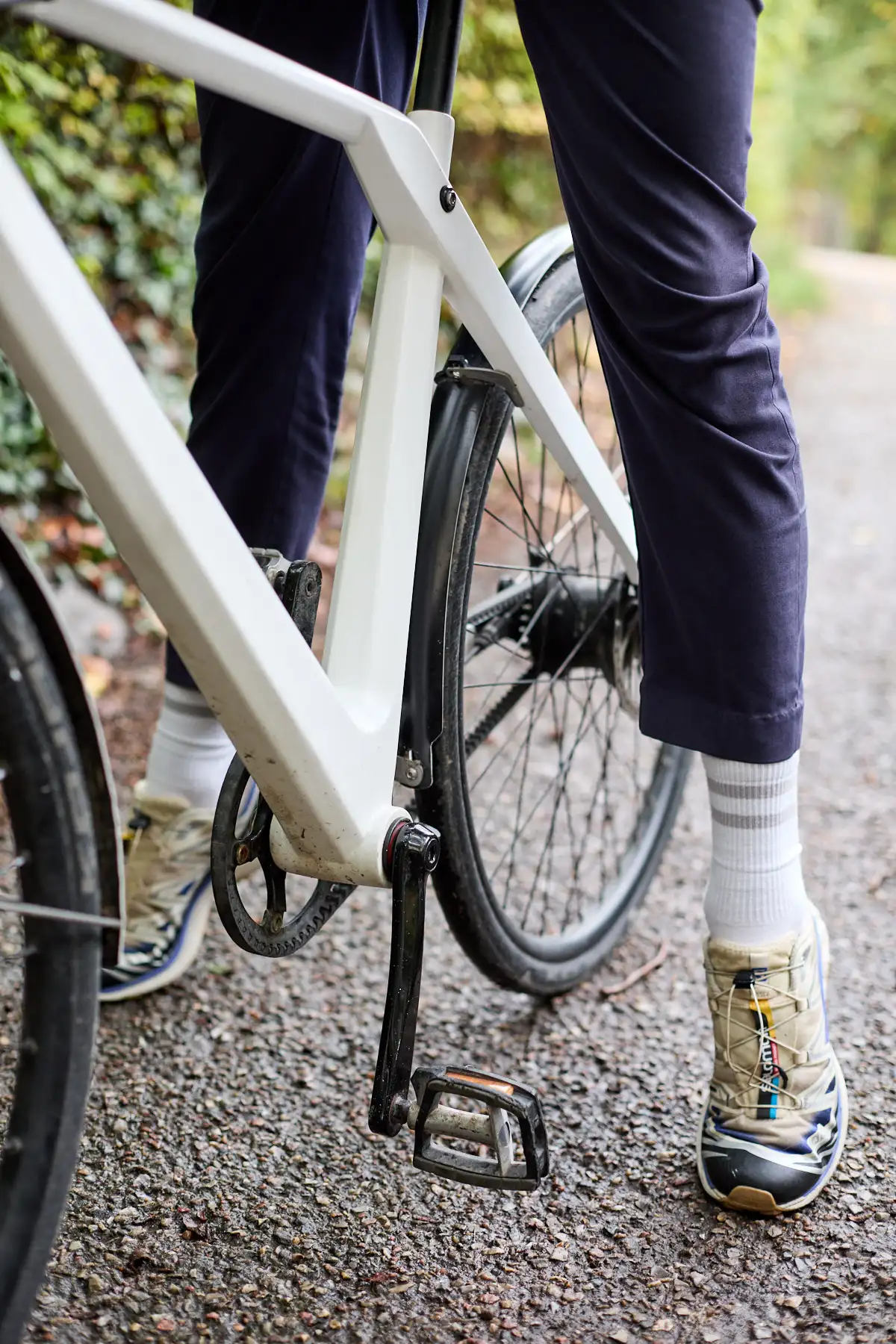
Service & Maintenance
Shimano gear hubs, like all mechanical systems, will experience wear and tear, and although their internal gear hub may be more reliable and lower maintenance than an external derailleur system, they WILL need regular tender loving care in the form of lubrication/oil changes and shifter cable adjustment and cleaning.
Oil change for the Alfine 11 should be after the first 1.000km and thereafter every 5.000 kilometers or 2 years, whichever comes first.
For the Alfine 8 spd, it should be every 5.000 km or 2 years, whichever comes first. If these hubs are used in a lot of water or mud you may consider shortening the intervals to keep them running optimally.
Gear cable maintenance is pretty straightforward, a well adjusted Shimano Alfine should shift crisply and if you are in doubt the first thing to do is to make sure that the cable is properly tensioned and the alignment mark at the rear hub is aligned properly as it should be. In the case of an Alfine 11, you can switch the shifter at the handlebar to 6th gear, and with an Alfine 8 you’ll need to switch the handlebar shifter to 4th gear – this should align the two alignment marks at the rear cable cassette joint on the drive side of the rear wheel.


Cable tension/position can be adjusted with the barrel adjuster pictured above. If the adjuster has reached its limits the cable will need to be adjusted at the cable-to-hub connection which should be done by someone with a bit of experience.
Despite the robust nature of an internal gear hub, it is a bit different than an external derailleur system which needs to be advanced to transition from one gear to another. With an internal hub, you want to relax your laid on the drivetrain while shifting you can even shift while standing still. Loading up the pedals during a shift puts unnecessary strain on the internals of the system and will cause them to wear out prematurely.
So when considering a new steed for the city streets it is a good idea to reflect on what you will be using the bike for and how you will be using it. What sort of terrain you will be riding in and how much daily TLC you expect to shower upon it? Both traditional derailleur systems and internal hub systems can lay the foundation for a fantastic riding experience but the internal hub can provide you with a more reliable drivetrain that will afford you longer intervals between maintenance.
Don’t forget this week’s Tuesday Deal, where a limited Erik Electric is yours for the price of just 3.162€/23.585 DKK (incl. Danish VAT) meaning you save 944€ (7.040 DKK) off of the full price (4.105€/30.620 DKK MSRP). Click the button below to learn more.
